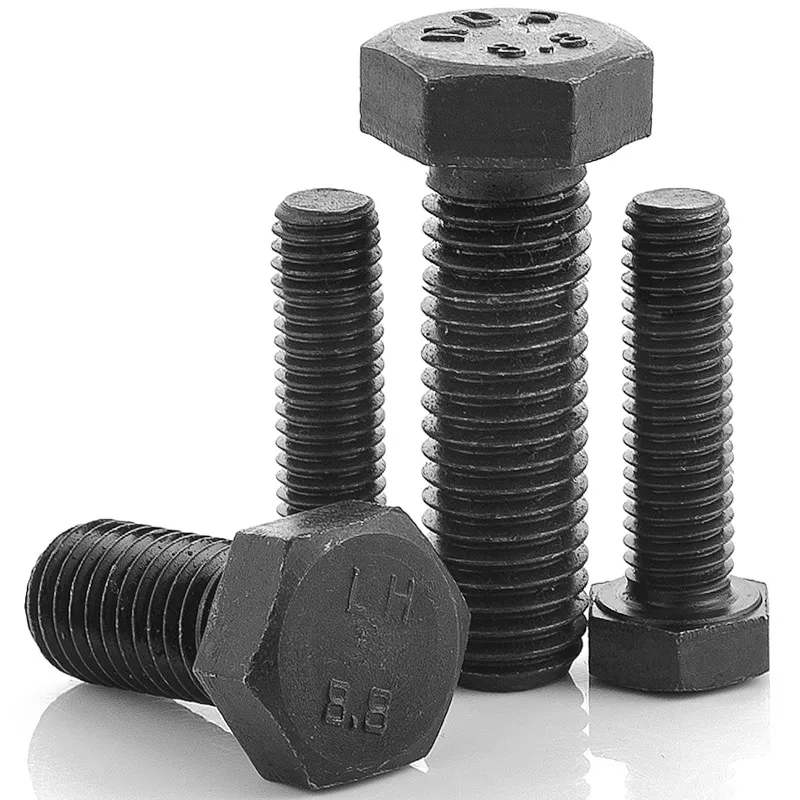

Selecting the Ideal Pair of Spring Washers and Flat Washers for Optimal Performance
Ott . 12, 2024 01:18 Back to list
Selecting the Ideal Pair of Spring Washers and Flat Washers for Optimal Performance
Choosing the Right Combination of Spring Washers and Flat Washers
When it comes to mechanical design and assembly, choosing the right components is crucial for the performance and longevity of a system. Among the various types of fasteners, spring washers and flat washers play pivotal roles in maintaining the integrity of bolts and screws. Understanding the characteristics and applications of these washers is essential for engineers and builders aiming to create reliable and effective designs.
What Are Spring Washers and Flat Washers?
Spring Washers Spring washers are designed to provide a specific amount of tension to a bolted joint. They are typically made from materials that can withstand elastic deformation, such as hardened steel, and are often shaped to apply force in a specific direction. The primary function of a spring washer is to absorb shock, maintain tension, and prevent loosening due to vibration or thermal expansion. Common types of spring washers include split washers (also known as lock washers), conical washers, and wave washers. Each type serves particular purposes based on the load and the environmental conditions.
Flat Washers Flat washers, on the other hand, serve to distribute the load over a larger surface area. They also help prevent damage to the material being fastened and reduce friction between the surface of the fastened materials. Flat washers are commonly used under nuts and bolt heads to prevent loosening and to provide a smooth bearing surface. They are made from various materials, including steel, plastic, and rubber, allowing for versatility in different applications.
When to Use Each Type
Choosing between spring washers and flat washers—or using a combination of both—depends on the specific requirements of the application. Here are some guidelines to follow
choosing the right combination of spring washers and flat

1. Vibration and Movement If the assembly is subject to vibrations or dynamic loads, spring washers are recommended. Their ability to maintain tension helps keep the joint secure, preventing loosening over time. In situations where movement is minimal, flat washers might suffice on their own.
2. Load Distribution and Protection In applications where the load needs to be evenly distributed, flat washers are ideal. They protect the assembly from damage and help to maintain the integrity of the material being fastened. If both load distribution and vibration resistance are necessary, using a combination of spring and flat washers can be beneficial.
3. Temperature Variations Thermal expansion can affect bolt tension, causing joints to loosen under fluctuating temperatures. Spring washers are effective in such scenarios, as they can accommodate expansion and maintain pressure. A flat washer can be placed beneath a spring washer for additional load distribution.
4. Material Considerations The choice of washer should also consider the materials of the components being fastened. For instance, using metal washers with plastic components can lead to wear or damage. In these cases, it may be advantageous to employ non-metallic flat washers to protect sensitive materials.
5. Cost vs. Performance While both spring and flat washers are cost-effective, the overall performance and longevity of an assembly can be improved by using the right combinations based on load, movement, and environmental conditions. Assessing the budget and the critical nature of the application will guide the decision on whether to utilize a singular type or a combination of washes.
Conclusion
In conclusion, the choice between spring washers, flat washers, or a combination of both is influenced by various factors, including the application requirements, the load distribution needed, and the environmental considerations. Engineers and designers must evaluate the function each washer serves to ensure joint integrity, performance, and longevity. By understanding the strengths and weaknesses of each washer type, a more reliable and effective fastening system can be designed.
Latest news
-
Best Self Tapping Screws for Drywall - Fast & Secure Installation
NewsJul.31,2025
-
High-Strength Hot Dip Galvanized Bolts-Hebei Longze|Corrosion Resistance&Customization
NewsJul.31,2025
-
Hot Dip Galvanized Bolts-Hebei Longze Metal Products|Corrosion Resistance&High Strength
NewsJul.31,2025
-
Hot Dip Galvanized Bolts-About LongZe|High Strength, Corrosion Resistance
NewsJul.30,2025
-
High-Strength Hot Dip Galvanized Bolts - Hebei Longze | Corrosion Resistance, Customization
NewsJul.30,2025
-
Hot Dip Galvanized Bolts-Hebei Longze|Corrosion Resistance&High Strength
NewsJul.30,2025

